
Trending Today
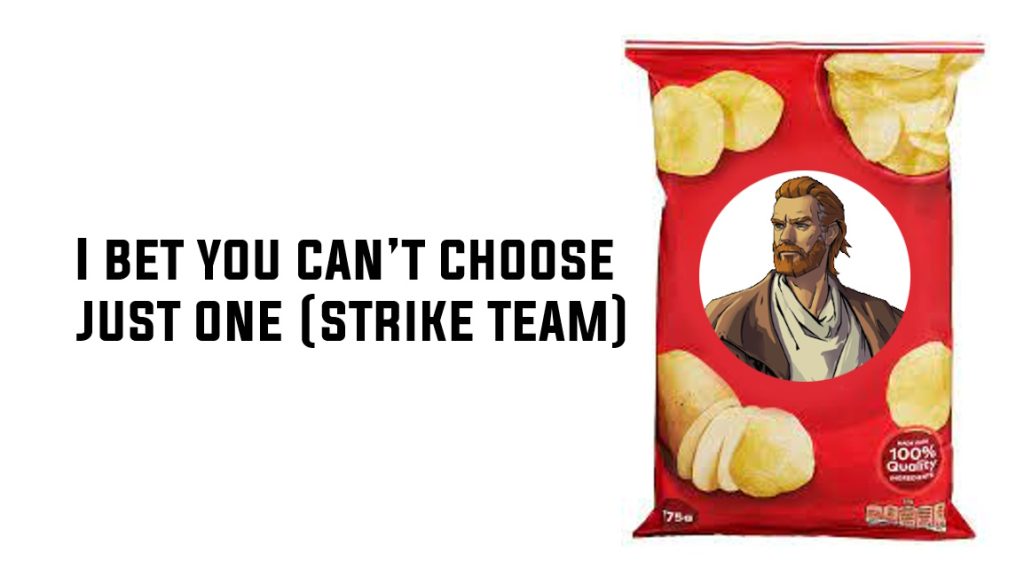
As someone who has recently started making YouTube videos, I have learned a lot about Adobe Premiere Pro. I figured I would take the opportunity today to talk through some tricks of the trade that I’ve picked up over my extensive three-month escapade. Specifically, I want to do an extremely in-depth, step-by-step, mouse-click-by-mouse-click guide on how to recreate the fan-favourite dice animation from my battle reports! Wait … hold on, who is this mysterious person calling my phone?
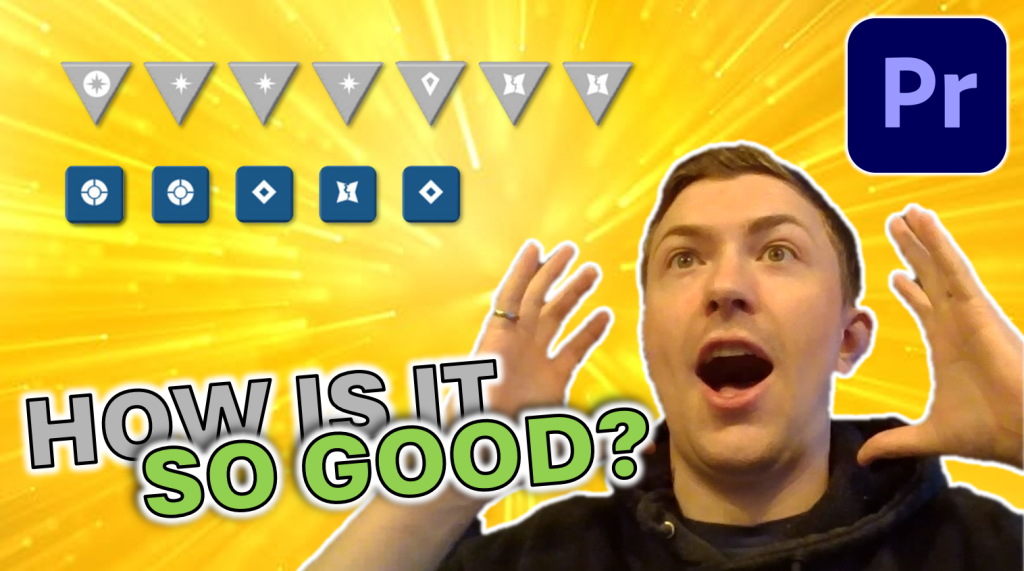
OK, so I’ve now been told by my so-called “editor” (rude) that I am not allowed to use my once a month Shatterpoint article slot to do a “useless Adobe tutorial”. However, I don’t like changing a blog title once I’ve written it, so instead I’ll write about list building for premiere showdown events. This month I may play in two large-ish premiere events, so I’ve been thinking about them quite a bit recently.
Before we get too far, I want to make sure we cover the basic stuff. What is premiere and how does it work? Well, you essentially bring four squads, one objective, and at the start of each game you pick two squads to be your strike team. The catch is that you need to play all four squads over the course of the event. It’s also worth noting that all four squads must respect regular list building restrictions. This caveat means you can only have primary or secondary Ahsoka, not both, for example. Same for Anakin and Vader.
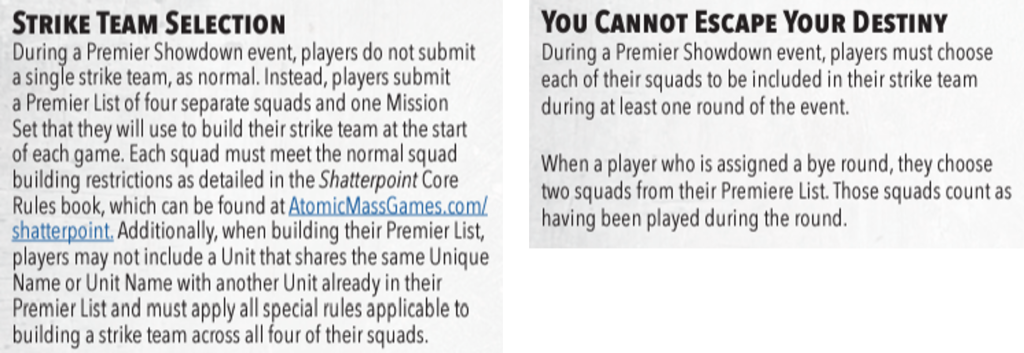
I’d imagine most players are pretty familiar with the two snippets above. However, there is a section in between that I conveniently left out. It covers the timing for choosing strike teams prior to a particular game. In this case, we see that first player is chosen after strike teams are created. Consequently, the first player choosing the objective and table side also happens after teams have been made.

So what does this all mean? Let’s examine the information we have on hand as we choose our strike team:
*As a side note, at a premiere event I would strongly suggest not unpacking your stuff until you’ve made strike teams and chosen first player. Packing everything up again to swap table sides burns precious clock time. Going to time and deciding a winner based on tiebreakers can lead to a very underwhelming and unsatisfying end to an otherwise great game.
Before we examine different approaches to your four-squad composition, I do want to highlight a few assumptions I’m bringing to the discussion. I’m envisioning a truly “premiere” event, meaning it has many rounds and a competitive focus. Having many rounds means you don’t need to rush to play all four squads over the course of the event. A competitive focus means that we can expect our opponents to be skilled and well-practiced in their lists, and in this environment fine margins can be decisive.
Without further ado, let’s get into the archetypes. We’ll start with the most basic and straightforward:
This approach is simple, yet effective. Just take two good strike teams and put them together as your four squads. Each game the decision will be “do I go with Team A, or Team B?” No mixing and matching to worry about with the two-teamer. Less decision making can be a real asset over a long event. By the time you’re playing maybe your fourth or fifth game in a day, fatigue can set in and poor decisions are more likely. I may not be a doctor like the aforementioned “editor,” (ironically I had to put that comma inside the quotation marks, you’re welcome – Doc) but even I know that decision fatigue is a thing.
Of course, having less possible combinations also means it’s easier for your opponent to figure out what they may play against. If, for whatever reason, it’s clear that one of your strike teams is not well suited to a game (potentially a bad table for it) then your opponent will be able to pick their own team with that in mind. The good thing is that I don’t think there are many hard-counters in Shatterpoint. Sure, some matchups are trickier than others, as I highlighted earlier, but for the most part I think any gains from counter-picking lists would be marginal. In a highly competitive landscape, however, any advantages help, even marginal ones. As such, when going for the Two-Teamer approach I would generally want one team to be a very solid all-rounder. The type of list you’d feel great taking to a regular Showdown event. The other team is where I like to get a little more boom or bust. Something that may not be good to play every round, but will have it’s moment to shine maybe 1-3 times throughout the event.
All this discussion feels a bit abstract. I think an example would be good to illustrate the point. General note for the examples in this article: they are chosen to be illustrative and I’m definitely not saying “this is the best list for this category” or anything like that. So, with that out of the way, what could a two-teamer approach look like in practice?
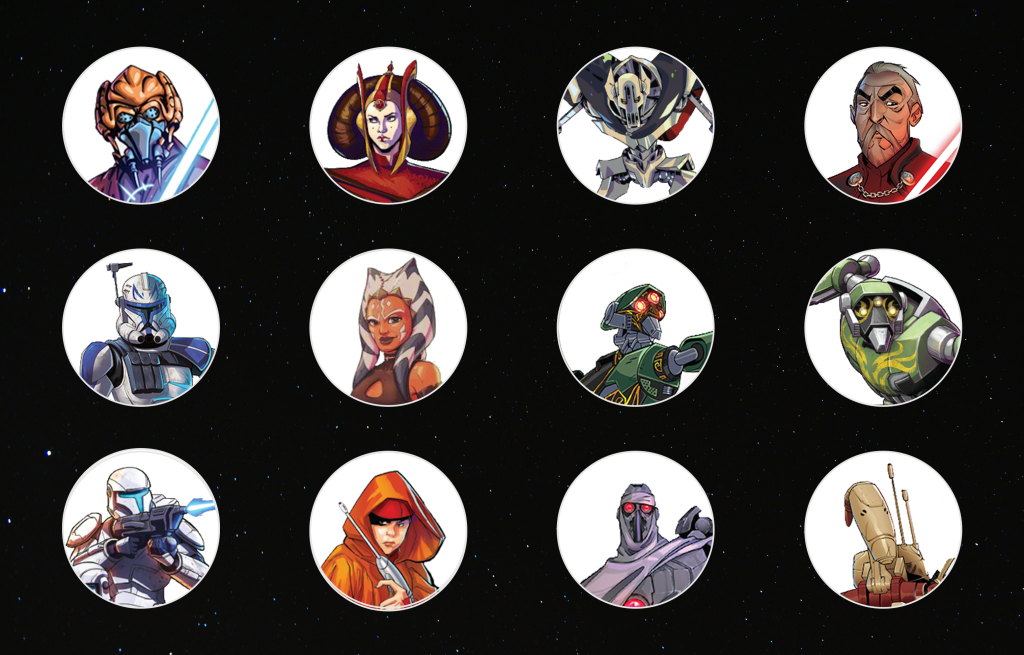
I think we can all agree that there are two distinct strike teams here. Plo/Padme will always go together and same for Grievous/Dooku. The two teams bring different attributes: the droids have tons of firepower and durability, the clones have force push and Padme tricks. Both have good access to movement abilities but the Republic has more verticality thanks to Commandos, Handmaidens, and Ahsoka. While strong, the Separatist list feels a bit more situational since the wrong table could really mess it up. It also lacks diceless displacement to more easily deal with stubborn enemies. Luckily, Plo/Padme feels like a decent all-rounder with a good variety of tricks to handle whatever is required. If I come up to a table where it’s clear to me and my opponent that droids aren’t the choice, I don’t feel too bad about Plo/Padme. It’s not a perfect team, but it’s not one that’s easily counter-picked either. Conversely, when the situation is just right, man oh man those droids can do some work! One team gets on base, the other hits home runs. Teamwork makes the dream work, as they say!
The concept behind a pivot-style team is pretty straightforward: I have one squad that I always want to play! You load up one squad with all your favourite units then choose one of the remaining three each game to best complement it given the circumstances. Ideally, the pivot squad should fill some key roles useful to any strike team, allowing the second squad to add some spice. If you start with a solid foundation then there’s lots of ways to finish the team in a way that feels good.
Despite having one squad in common, your three list combinations could all play quite differently. This gives a lot of flexibility each game as you try to choose the perfect strike team. It also makes it a bit trickier for your opponent to guess what you’re playing, though they’ll figure out 50% of the list if they’re perceptive enough (or have enough tournament data to see what’s going on).
What could a pivot list look like?
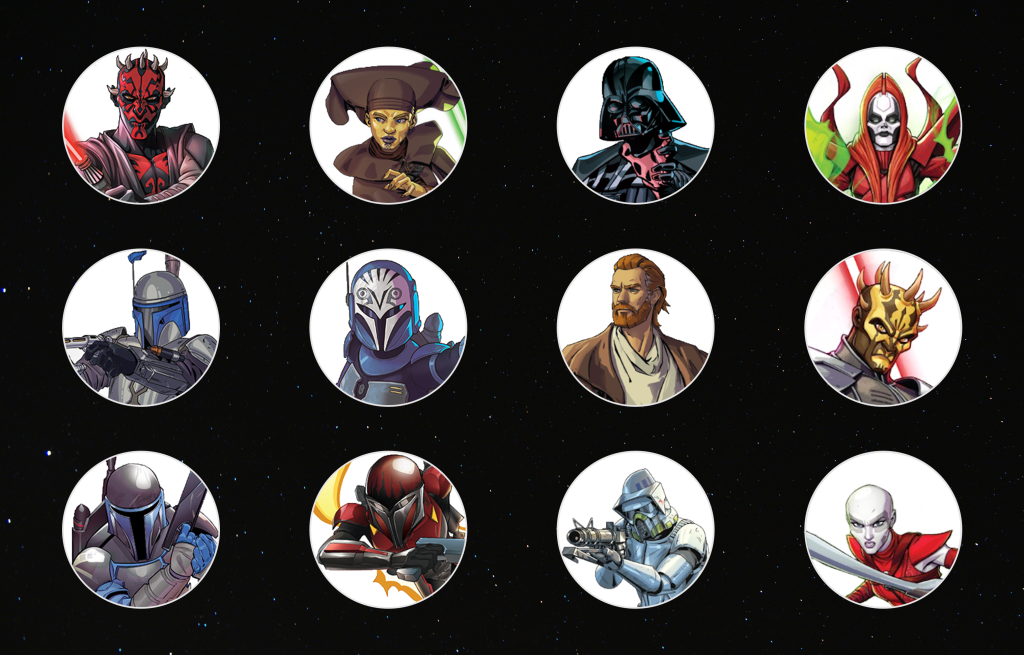
I got very creative with my pivot squad here. I took a bunch the S-tier units from my tier list article and jammed them all into one squad. Unbeatable! The three potential pairings all bring something a little different. Luminara brings movement and some individually strong units, Vader brings killing power and Obi2 tricks, and Talzin brings defensive swing with some Dathomirian synergy. I would say each of those lists is something you may see perform well at a standard Showdown event and we get to pick the best positioned one each and every round.
There is a downside here, however. It may seem subtle, and maybe I’m overblowing it, but I think it’s pretty important. Even though each of these three teams contain six units we’d expect to see in a Showdown team, they aren’t necessarily organized in the same way. For example, consider the Maul and Luminara squads. I’ve been preaching the good news about Maul/Lumi for months now; I think it’s an amazing list. However, when I play it I put Bo and Super Mandos with Maul, Jango and Clan Kryze with Luminara. The supports are whatever, I won’t focus on that. The big loss here is having Jango and Maul in the same squad. I really like having diceless displacement on both sides of the table, especially for Sabotage Showdown.
In Sabotage, it can be tough for units deployed on one side to cross the board and contest the far midline objective in their first activation. Ideally I want to spread Maul and Jango out for better coverage. Imagine I’m driving from Vancouver to Calgary (they are about ten hours apart by car, for reference, assuming you drive fast but not crazy fast). I’d like there to be tow trucks in both cities. Otherwise, maybe my car breaks down an hour outside of Calgary but the only tow trucks are in Vancouver. Sure, one will come eventually, but by the time it does it may be too late as I’ve resorted to cannibalism, run off into the mountains, and become a scary myth spoken of around campfires by visitors of Banff National Park. Now, you may be asking “are tow trucks that scarce in Canada” or even “was this analogy really needed?” The answers to those questions are “no” and “yes”, but not necessarily in that order. The point is that, by gaining flexibility, we’ve sacrificed a bit of optimization. This may be acceptable since it means we get our best units on the table every game, but once again the small margins could be the difference over the course of a long, competitive event.
I’ll admit that I don’t really have a strong definition for this category. Technically speaking, with the four-pick-two system you could have up to six combinations that all work together, but I wouldn’t recommend trying to play all six. I guess I’d define the super-flex as a setup that gives you 3+ solid squad combinations without pivoting around a single squad. The idea would be you have super flexibility, but I’d say that also means you’re making decently large sacrifices regarding the optimization of any one of those squads. I fear the super-flex approach can make you the dreaded jack of all trades, master of none if you aren’t careful.
I’ve used up too much of my word count on that silly tow truck analogy and bad jokes about Adobe at the start, so let’s cut right to the example.

For this example I’ve gone all-in with the super-flex. Any of the six possible combinations could be an OK list. Again, don’t try to actually play all the combos. Pick three or maaaaybe four before the event and stick to those. Unless you are an absolute machine, I don’t think you can rock six teams and do enough preparation with each. Furthermore, if you haven’t prepped a list fully then you don’t want to pull it out in a competitive event. Any gains from picking “the right team” will probably be negated by unfamiliarity with that team if you haven’t prepared. It’s all too easy to think “this combo should work well for this matchup” or “this combo should be able to accomplish X” but then be disappointed once it’s on the table, especially against stiff competition.
A lot of the things I said regarding the pivot approach will hold true for the super-flex. Generally speaking, the more flexibility you add the less optimized you’ll become. In the example above, going full Republic with the chosen primaries meant I had to dig into the dregs of the faction and take 501st clones. Oh, the humanity! I don’t want to make it sound all bad for the super-flex though. I think in the right circumstances it can be a nice middle ground between the two-teamer and the pivot. Compared to the pivot approach you can actually optimize the strike teams a bit more if you’re willing to have some of your best units off the table in some games. Compared to the two-teamer you gain a bit of flexibility.
It’s cliché, but I’ll use the famous Bruce Lee quote here: “I do not fear the man who practices 1,000 kicks one time each. I fear the man who practices 1 kick 1,000 times.” When it comes to premiere list building, I’m leaning towards the latter. I want to build two very strong lists and get good with those, rather than having more teams and less practice. More flavours can be enticing, but when I go to the ice cream shop I usually go for one of my few favourites. When I do branch out it can be nice, but there’s always that feeling of “I think I would have liked the white chocolate raspberry more”. But that’s just me. There are definitely advantages to building premiere lists that don’t take the two-teamer approach. Despite my biases, I hope I demonstrated those advantages well, along with the potential downfalls you should be aware of.
I also get that there’s a unique allure to premiere list building. It’s intriguing to dream of a flexible group of four squads that can be interchanged, becoming just the right thing at just the right time. Bringing two separate strike teams and choosing A or B every game just doesn’t feel as exciting for many players, and I get that. As per usual, I may just be a risk averse coward. Or my small brain just can’t handle thoroughly thinking through all those thoughtful thoughts throughout the tournament.
I do think all approaches highlighted today have their merit. No matter how you choose to assemble your premiere squads, there are a couple tidbits I would claim to be universal:
Now go out there and build some great premiere lists! Not too good though, if you’re going to the same event I am.


Copyright © 2024 The Fifth Trooper. All Rights Reserved.
1 Response
Got excited for a premiere pro tutorial only for it to turn out to be an article on Shatterpoint.